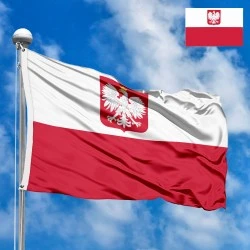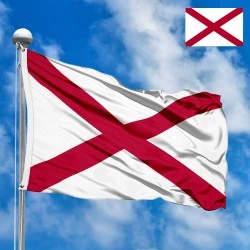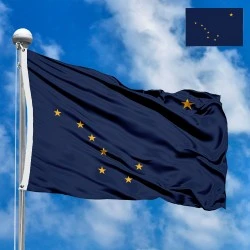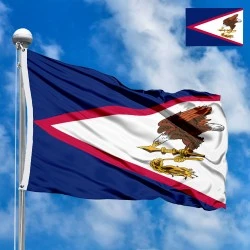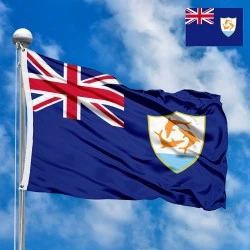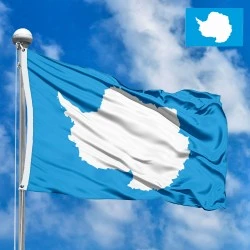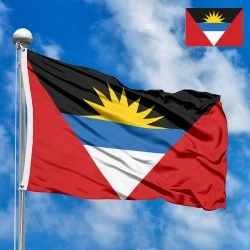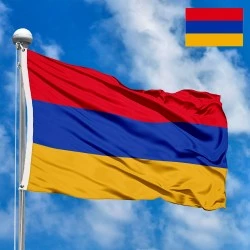Flag of Poland
- Flag Type: State
- Proportions (official): 5:8
- Official name: Republic of Poland
- Local name: Poland
- Sovereignty (year): YES (1918)
- Member of Organizations: UN, NATO, European Union
- Country code, territory: PL, POL, 616
- Capital: Warsaw
- Large cities: Kraków, Łódź, Wrocław, Poznań
- Population: 36,750,000 (2024, GUS)
- Religions: Catholic ~85%, other/none ~15%
- Area (km²): 312 696
- Highest point: Rysy (2,503 m)
- Lowest point: Raczki Elbląskie (-2 m)
- Currency: Polish Złoty (PLN, zł)
- Languages: Polish
- Dialing code: +48
- National domain: .pl
Flag Information
General information
Demography and Culture
Economy and communications
- All Flags
- Flags of Countries by Continent
-
Flags of Organizations
- Flags of UN countries
- Flags of the European Union countries
- Flags of NATO countries
- Flags of the countries of the Organization of Islamic Cooperation
- Flags of the countries of the Organization of American States
- Flags of the Arab League countries
- Flags of the African Union countries
- Flags of the countries of the Union of South American Nations
- Flags of the Commonwealth of Nations
- Flags of the countries of the Secretariat of the Pacific Community
- Flags of the Nordic Council countries
- Flags of the Caribbean Community
- Flags of the countries of the Association of Southeast Asian Nations
- Flags of the East African Community
- Flags of the countries of the Organization of Turkic States
- LGBT Community Flags
- Historical Flags
- Ethnic Flags
- Flags of the USA (states)
Description
The national flag of Poland is a profound and evocative symbol, representing centuries of Polish history, resilience, sacrifice, and the unwavering spirit of its people. With its simple yet powerful design, consisting of two horizontal stripes of equal width: white on top and red on the bottom, the flag embodies the nation's struggle for independence, its deep-rooted cultural heritage, and its aspirations for freedom and sovereignty. Officially adopted on August 1, 1919, shortly after Poland regained its independence, the colors of the flag have a much older lineage, dating back to the medieval Polish-Lithuanian Commonwealth and the symbols associated with its royal heraldry. The flag is far more than a mere national emblem; it is a vibrant narrative of Poland's enduring identity, a testament to its courage, and a beacon of hope for its citizens.
Dimensions, Colors, and Arrangement of Elements: The design and specifications of the Polish flag are precisely defined by law to ensure its consistent and respectful representation as a paramount national symbol.
-
The flag is composed of two horizontal stripes of equal width: the upper stripe is white, and the lower stripe is red. This minimalist design is intentional, emphasizing the purity and historical significance of the colors.
-
The proportions (aspect ratio) of the flag are 5:8 (height to length), a specific ratio that provides a distinct visual balance. Each horizontal stripe occupies exactly one-half of the flag's height.
-
The official shades of the colors are crucial for the flag's accurate appearance and specific meaning:
-
The white is placed on the upper half. It is universally interpreted as symbolizing purity, peace, and honesty. Historically, it is drawn from the white of the Polish eagle, the national coat of arms, representing the purity and majesty of the nation. It also signifies hope and optimism for the future.
-
The red is on the lower half. This vibrant color is deeply symbolic of courage, valor, and the blood shed by Poles throughout history in defense of their homeland and their freedom. It originates from the red background of the Polish coat of arms, specifically the shield on which the white eagle is depicted. This red signifies the sacrifices made for national sovereignty and the strength of the Polish people.
-
-
While the most common version of the Polish flag is the simple bicolor, there is also a state flag with the coat of arms in the middle of the white stripe. This version is primarily used for official purposes abroad (e.g., at embassies, consulates) and on ships. However, for everyday use by citizens and in most contexts within Poland, the plain white and red bicolor is the recognized national flag. The absence of a central emblem on the primary national flag emphasizes the direct symbolism of its colors.
History of the Flag's Creation and Adoption: The evolution of the Polish flag is a profound reflection of Poland's tumultuous history, marked by partitions, struggles for independence, and national rebirth.
-
The colors white and red have been associated with Poland and its state symbols since the Middle Ages. They are derived from the heraldic colors of the Polish coat of arms: a white eagle (the national symbol) on a red shield. The white eagle itself dates back to the Piast dynasty in the 10th century.
-
During the Polish-Lithuanian Commonwealth (1569-1795), the royal standard often featured the white eagle on a red field. Various military banners and noble flags also incorporated these colors.
-
The first official use of white and red as national colors was during the Four-Year Sejm (Great Sejm) of 1788-1792, a period of significant political reform aimed at strengthening the Commonwealth.
-
Following the partitions of Poland in the late 18th century by Russia, Prussia, and Austria, Poland ceased to exist as an independent state for 123 years. During this period, the white and red colors became powerful symbols of Polish identity, resistance, and the dream of regaining independence.
-
In the November Uprising of 1830-1831 against Russian rule, Polish insurgents officially adopted a bicolor flag of white and red as the national symbol. This marked a crucial step in formalizing the white and red as the colors of the nation.
-
Throughout the 19th century, various Polish revolutionary and patriotic movements continued to use white and red, solidifying their association with the struggle for independence.
-
After World War I, Poland finally regained its independence in 1918. On August 1, 1919, the Sejm (Polish parliament) officially adopted the white and red horizontal bicolor as the national flag of the newly re-established Polish Republic. This act cemented the colors chosen by generations of patriots and revolutionaries.
-
During the communist era (1945-1989), the flag remained the same, although the official use of the state flag with the eagle was sometimes more emphasized. The simplicity of the white and red remained a constant symbol through all political changes.
-
The flag's design has remained unchanged since 1919, symbolizing the continuity of Polish statehood and the enduring spirit of its people.
Symbolism and Meaning for Residents: For the people of Poland, the national flag is a source of profound pride, symbolizing their unique history, unwavering resilience, and deep-seated patriotism.
-
The white stripe embodies purity, peace, and hope. It reflects the nation's desire for a just and harmonious society and symbolizes the inherent goodness and moral strength of the Polish people. Historically, it links directly to the white of the majestic Polish Eagle, signifying the purity and nobility of the Polish state.
-
The red stripe symbolizes courage, valor, and sacrifice. It represents the blood shed by countless generations of Poles who fought heroically for the freedom, independence, and sovereignty of their homeland. It is a powerful tribute to their bravery and a reminder of the immense cost of national liberty. This red is specifically tied to the shield on which the white eagle sits, demonstrating the close connection between the national animal and the nation's colors.
-
Together, the white and red colors represent the indomitable spirit of the Polish nation. They signify the unity of the people in times of peace and adversity, their unwavering determination to defend their identity, and their continuous pursuit of a free and independent state.
-
The horizontal arrangement of the stripes is often interpreted as representing the sky (white) over the land (red), or the purity of the nation over the blood of its citizens.
-
The flag is a constant reminder of Poland's turbulent history, including the centuries of struggle against foreign domination and the numerous uprisings and wars fought for freedom. It evokes a strong sense of national solidarity and collective memory of shared triumphs and tragedies.
-
The flag is prominently displayed on national holidays, particularly on Constitution Day (May 3rd) and Independence Day (November 11th), where it is saluted with deep respect and reverence. It is also omnipresent during public demonstrations, sporting events, and cultural celebrations, uniting Poles in a powerful display of patriotism. For Poles, both at home and in the vast diaspora, the flag is a tangible link to their heritage and a symbol of their enduring national identity, regardless of where they reside.
Interesting Facts: The Polish flag, simple as it appears, is rich with fascinating historical details and unique characteristics.
-
Colors from Heraldry: Unlike many flags whose colors might represent abstract concepts like nature or revolution directly, Poland's flag colors are directly derived from its national coat of arms: the white of the eagle and the red of the shield. This makes its symbolism very specific and historically rooted.
-
"White Eagle" Day: In addition to Constitution Day (May 3) and Independence Day (November 11), Poland celebrates National Flag Day (Dzień Flagi Rzeczypospolitej Polskiej) on May 2nd. This day was established in 2004 to promote knowledge about Polish symbols and traditions, particularly before Constitution Day, encouraging Poles to display their flag.
-
Unique Shade of Red: The specific shade of red used in the Polish flag (crimson/carmine, Pantone 327C) is traditionally known as "Polish Red" or "Carmine Red." This distinct hue differentiates it from the reds of many other national flags and has specific historical significance.
-
Similarities and Distinctions: The Polish flag is often confused with the flags of Monaco and Indonesia, both of which are also horizontal red and white bicolors. However, the order of colors is reversed (Monaco and Indonesia have red on top, white on bottom), and the proportions are different (Monaco: 4:5, Indonesia: 2:3, Poland: 5:8). These subtle differences are crucial for distinguishing them.
-
Symbol of Solidarity: During the Solidarity movement in the 1980s, the Polish flag became a potent symbol of popular resistance against the communist regime. Displaying the flag, often adorned with Solidarity banners, was an act of defiance and a clear statement of national aspirations for freedom.
-
Flag Code and Respect: Polish law strictly regulates the use and display of the national flag, emphasizing respect. Damaging, disrespecting, or misusing the flag is subject to legal penalties, underscoring its profound importance as a national symbol.
-
Symbol of Uprisings: The white and red bicolor gained immense popularity as a symbol of defiance during the various Polish uprisings throughout the 19th century, particularly the November Uprising (1830-1831) and the January Uprising (1863-1864). Its continuity from revolutionary symbol to national flag is a powerful testament to the nation's fight for self-determination.
In the demonstration images, full-size flags are shown with proportions of 2:3, and hand-held flags with proportions of 1:2.
Color
| COLOR | PANTONE | CMYK | RGB | HEX |
|---|---|---|---|---|
| 032 C | 0-100-63-12 | 220-20-60 | #DC143C | |
| White | 0-0-0-0 | 255-255-255 | #ffffff |
Donation
Download
Completely free for commercial and non-commercial use (public domain).
You can freely use them in your news magazines, websites, software, mobile applications.
We appreciate a backlink to https://flagssite.com
Vector files - Flag of Poland (PDF, EPS, SVG, AI)
- .pdf, .eps, .svg, .ai format; RGB color model; Official Proportions.
"30" - image size (by height) in Pixels (px).
!!! For resizing, use the Latin (eng) keyboard layout.
<img src="https://flagssite.com/flags/00svg/20228.svg" height="30" alt="Flag of Poland">
 Vector files 2:3, 1:2
Vector files 2:3, 1:2
- PDF format; RGB, PANTONE/CMYK color model; aspect ratio - 2:3, 1:2.
Raster files - Flag of Poland (PNG, JPG)
 Waving flag
Waving flag
- PNG format (transparent background), 72dpi, dimensions in Pixels (px), aspect ratio 3:4.
- 15х20 px
- 30х40 px
- 60х80 px
- 120x160 px
- 240x320 px
 Sizes:
Sizes:
"v15" - image size (by height); if necessary, replace with available: v15, v30, v60, v120, v240.
!!! For resizing, use the Latin (eng) keyboard layout.
<img src="https://flagssite.com/flags/v15/20228.png" alt="Flag of Poland">
 Round flag
Round flag
- PNG format (transparent background), 72dpi, dimensions in Pixels (px), aspect ratio 1:1.
"d15" - image size (diameter); if necessary, replace with available: d15, d30, d60, d120, d240.
!!! For resizing, use the Latin (eng) keyboard layout.
<img src="https://flagssite.com/flags/d15/20228.png" alt="Flag of Poland">
 Rectangular flag 2:3
Rectangular flag 2:3
- JPG format, 72dpi, dimensions in Pixels (px), aspect ratio 2:3.
"h30" - image size (by height); if necessary, replace with available: h15, h30, h60, h120, h240, h360, h480.
!!! For resizing, use the Latin (eng) keyboard layout.
<img src="https://flagssite.com/flags/h30/20228.jpg" alt="Flag of Poland">

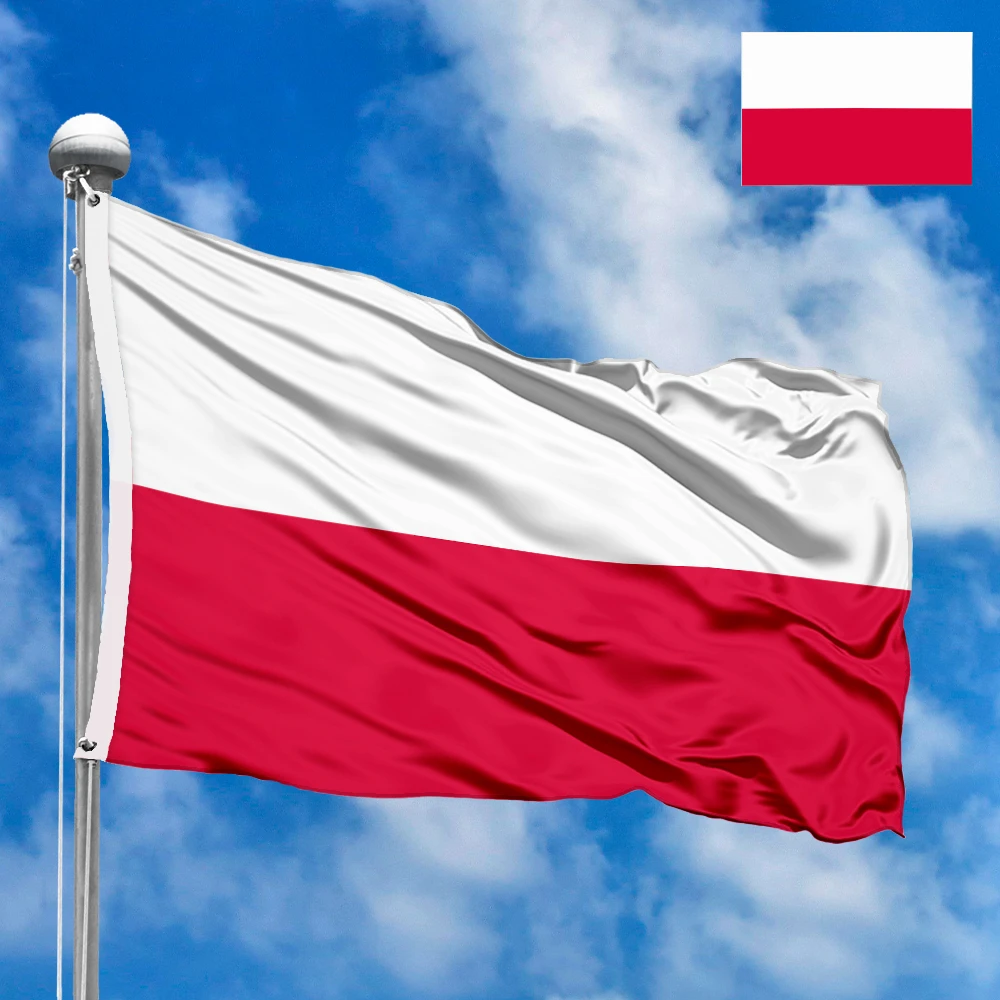
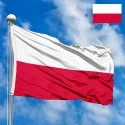

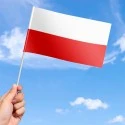

 Sizes:
Sizes:
 Sizes:
Sizes:
